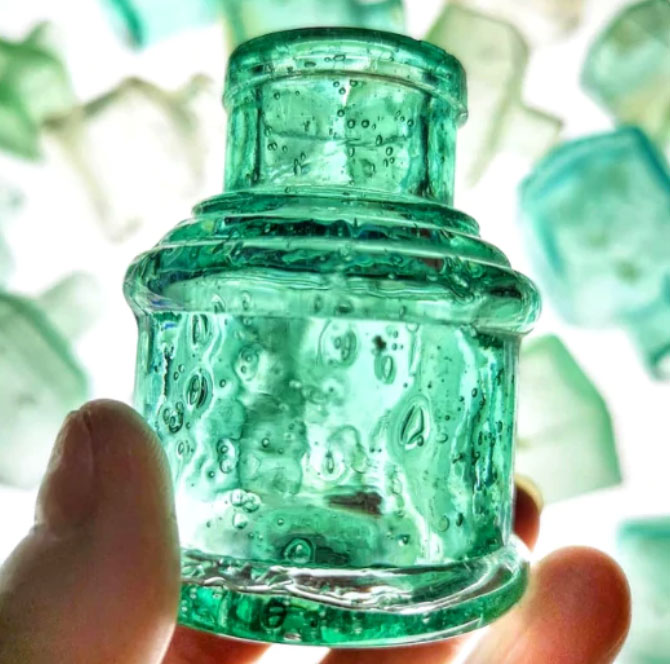When we first encountered glass straws while traveling in Germany, we were intrigued. We bought a bunch, and brought them back to Portland to test in the restaurants owned by our friend.
#1 We were committed to using reusable straws. Our first question: how did glass straws compare to metal straws? Was metal a better option for busy commercial settings?
We didn’t get that far. In our home tests, we found that metal straws were very difficult to keep clean inside. They have a narrow diameter, and many have a bend as well. We put them in the dishwasher, along with the glass straws. The glass straws came out sparkling clean–even the bent ones. We used a cotton swab on the metal straws, and were appalled at what was lurking inside, especially near the bend. Cleaning each one with a brush is not a viable option in a restaurant setting.
It was obvious to us that metal straws were not suitable for reuse in a business, so we stopped there.
#2 We knew that glass straws were easy to clean in the flatware caddy of the dishwasher, but our metal straw experience made us leery of using ANY bent straws other than clear ones. We want both servers and guests to be able to see (clearly!) that the straws are clean. That’s why we don’t sell bent glass straws in colors.
#3 We worried about breakage. After all, glass is breakable, even if the high-quality borosilicate in our straws is the same tough material used in laboratory test tubes. So, we got a little rough with them. We shoved them into dishwashers. We tossed them into glass jars to dry. We let them roll off tables.
We found that they were stronger than we expected. Sure, if we dropped them from a high bar onto a tile or concrete floor, they might break, just like any glassware. But if we let them roll off a table onto a wood or linoleum floor, they were fine nine drops out of ten. And after daily use for several months, we found no chipping.
#4 We wondered how many glass straws would get stolen. Well, it did happen, but we found that we could reduce theft by the way we presented the straws to customers.
Here’s a helpful hint: Don’t say, “We’ve switched to glass straws. Hope you like them!”
Instead, say, “We want to reduce waste, but also make sure you have a good experience here.” Guests said this made them feel honored and a part of the solution. They were happy to have a straw to use that wasn’t made of plastic or paper. They were impressed by the beauty and smoothness of glass, and told an average of six others about their positive experience.
#5 We played with different lengths and diameters of glass straws. Customers felt that the bigger diameters made them drink too fast, and we found that the narrower ones were more likely to break and often needed to be cleaned with a brush. So, we decided to sell only the 9 millimeter diameter straws to ensure easy cleaning and greater durability.
Guests told us that the 8” straws got lost in the garnishes of taller drinks, making it difficult to sip them. Both the 8″ and the 5″ straws were a little too short for guests who like to stir their drinks. That’s why we chose to sell only the 9” and 6” lengths that were most favored by guests and that fit into the most-commonly served beverages.
We continue learning about using our glass straws in bars and restaurants. For example, we learned that in busy settings, having fewer colors of straws is easier for servers. Though some loved having a selection, most just picked a couple of go-to colors to keep things simple.
We’ve branched out into events, including weddings and conferences. Our glass straws make great gifts for event attendees.
We’re listening, learning, and making glass straws available at an affordable price for a range of situations.










